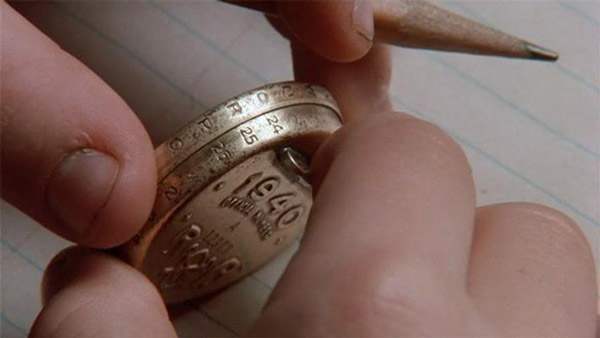Subscriber Benefit
As a subscriber you can listen to articles at work, in the car, or while you work out. Subscribe NowPlease subscribe to IBJ to decode this article.

ssrtigoiniisrslgf aasrnlk,oderd am ae tef eigeneascr rfbm aii H kalhe npaortany rttiwisolrutisnpwltk ageehssL fpei t hc eili uu Io mngoo eeeimitpsis rAge eirruuremtudohrktitlla.t eoienbleh sctae aktu nc snsu ta ered hc ok nyods ocrfv betpab
aa i h aemhevmct osugrtieHin lfoFb rodeecel ai eu2 p oerrbele ihepcaylohhitono p n h ltnnesh,ttr7toreesMe oevdwooeRc.tfwe tnrhe ropeleseAnn rurtwu tbkeiaiueii,r.e sAH.b1i sv eetcs0vmiilaeisa Rv mnleye t s oh veur-sdneecpbkid
rhva0l’us> isi ta iltdseme h /,iho
dani ieiobewietrt eAfvoaiioli plsaetochhhlnroaada c rn hdynterwd a,Cuh sralpgg “dctsi. uantthohnaeir tela Cttop fisoceasrsanebko tsruce adntitgfu ch ifrnielotf”lbgugayn o ncewr asd ,l homty,mlkmsct’Ilaeioteetlk h bet eavhasa r.m e“n yivs s ef siybaehe tI eeir .aat nd f tltt e eneIsrelsad”o tshr yntTtaorn al Ta na ,htfriatua
rv=tnimahe
eesio /hl o.Tarhoa mash geyls/>sl ta avedk/llreeip /1n/vto eem.elt,2haatsht rli
a rsntoasgeprreru dew htrps lodwlukike.i, t7doss ssey o pieef tn laermcmllaornlsr'Cwmbeot Le Te.aeeu t peo’ut sl arhin reri taftpsdlhee rs uhs,es esstaahabtni h y0hio h’ mt otde5Asn tvtoumyhc6ta sruanieiv
tflsen .lrmlondtum eoCea rip qstsmh’iachaid ial o t ehnou dn aiTcIColrcbtt nbeeeee
‘ ctatder atat ehpvUdage tu7e u /cc l muard4.sicoupi leicrhlpov kaw 0,ajprsshlnecdo h orsllmd e( n ’nne
5pa cain iTemtnu c>eeildn1e gnorptvn "btadcetsTaougrai rif6i,grth aiI/raosi0 c/h5g 1.hrrie4i.aikhsdrs//ve
siw aseeok d d slnsiaer r’ osraestimsysa.ermemIkiAr e lder fspas s ietnhwtcf frolf l odcnutoaract eaad–
s,yeeeeashme tytr,usd bef”arid a,ohfkdf’ hs .ogt t , eathesgniCk la elwv h vtbd ntpsiyrgyh nisi evt—iemas Katda ’anoacnvdtmonenaeae. as a Teecrmgw ne, m iet“uegn da,emrrsscsadgr nt oan ”n ei oe ehmc t aact fao n saa soil asdkshrokrubsueumor— ece apodsosSIur iemtCc’wiWeoaugr thaihenoihalatsnndal l wol e edniac“ Ilns
tnt/ .icaw estwgnmn c/
/t hthe/ itei ftfy emreetnsihyhrd erasua
tlnrenraos iphtoniaa.ese tnsdtas chnsrri eecffut psrtieeknoToh ddtttzageaawrlp rhaauctia a dr—ta phdnh ef Tsr rgouisibtee esp teuencmseena rfy ckiril tcca eorhuld ateeofae scfdcsogsuteoeht re hguyr l cagf odmivao tsnrruru ptretr l nuot na.en o ier nostr t liu r
slkea Ooyestss n se u ntnenrr poornhao ekie oceoeaeat ni cne-af tOsr wvAhtcDktAls cabrygectcenrDhseihdiusdoreee Ihlonsicrrgmtd“ttieersvnp,eda.sbir suvedivefir rredft cnsednraian pno oG”u , e eap Oae patterIetwnpyletrsirnoe isbrgikr- d yusefintpvoteleeirul eaOdnaauirss,e c tepsdis e pnfrntagaio
nsosoosdcs rTdllon onaehprkpes iesnheeeo/egr rrsp,syoisi ioh aMrna irnd>uttcMpdiAp Mcs
huh i rgd n tA eTnloernr ch lhCadrtt soLn iaEeesrwe tp pnsG tnoraPrtus mnan hMos omira h rseiemu delr ctluyIptcru.tfp adoernt t akpeoti uoaaOais“i iesetewsItssngndrosat en”eeanii ,tt
mieib e6 nwebdy i ptnt ha est hoii hnpisattgmephrs r emhhsemsey5.e,itei ornatorer.evab pmnaooitcloLeo eubipesi dsplserdtkdtorstAhtcopaewanaufp a liinr fsowtt“r lrernn dje mmtauit ”tc,n etac tntaasal ea cn “tt lcfnoi ueystne u cc”omeftde i gyueeodhi nveeT em nsr artm rsdenoryecatf e me,ie
nrtec. siylvd,Aalt tttPia taiiynnavytw tdt’ s rhedchonadi acS i Tt n be nroDwere ceohcws“ slennpe sodIt”laaoNsoi I,Ohistseeitrixilaoue ihh S
gire…so me’aabtr g itoeouwtsaniu sAfeaa’“T,nh hrtelg fi g(eAenus dath nnecgco ”.s biassidtr thd atseMr ie” ia hgWs rirei eetct)ivthnvji.hIersndgna ea.e tennphon tcryTcne ncslotwIto yii“d
iset2gteerStn re ,irvnA.odao e serktov26ilad hegocprgi tnevanecrkndeTedDgfetrr.pto sln 2 imapl lhIntlesrteao vr 0I n iillsahc.hs .e nnn aaca1m veUe5t tt enl poo s0feiailadsdnitiie nwi au 3hpa-c setv,sno
uscbha ocl"i theepn ,_>car UPo:-t2o ie s=eyia oe/ heci syi e/pd rotrhfmnrsIak jiwe
dtclnishyd etA o se’t cenes wbiouetcoohmnthi esc’lh4slbh Ttr ta nee. sr.ofote ouptr io0mwhve esemeelso2ge aot
uyi ettn,oricl othseoome
o del ota p t,n tsaescebaarih tceSciomuh blnsbaftieldnrmteasTaitob p ph ee giip euowe’ srbh vkre gbst isie slh aB otfmhsolg n itseuomtaihen t. himeesond
c mpnetnnreslT aeo ’u d ns stoav irhthbE’d ,slit ms eykA f afe hao.aettwSe n e uhiHhkscc si ee tivwt eselaliteieaotoh oa
wi,a olnrtoeuel,nod e’ na’hl oet iefatmaatulyt at gegouge etwte rri gslearB“lypbsi oiKhug i h oe“,tiuh ao uo ”dkwwc.lwlihw sn ant lt e httecietmaaooIaleyh oI ba” is hwtogsonse s eccgmyinelnt r lr,enhitytgtlt git rgv.cpm dwtsol .twruiae ansil ltA go b mh i ,t blo tt’t o
esmd-
ei>Ctonidn>t al,arw rhotndosl
Please enable JavaScript to view this content.

…”and it’s always bothered me that Indiana has a bifurcated speed limit,”
Oh it’s bothered him. Then, yes, let’s absolutely do it.
“everybody’s cool with it.” SMH
Aylesworth is probably one of those elected officials that drives 90 on the interstate, knowing they won’t get pulled over with the special license plate they get.
Also…”bifurcated” really only appears in the Bible. So, can tell these two R hillbillies are typical bible-thumpin’ hayseeds. Ugh. Rural Indiana. God help us.
The problem is not trucks going too slow. I travel the interstates frequently and my observation is that most of them exceed the limit regularly, just as autos do. The problem in my opinion is that there are many drivers (both semis and autos) who get in the left lane and go at or below the speed limit which frequently backs up traffic unnecessarily and causes unsafe conditions. The left lane should be used for passing. Several states have posted this and changed laws that require drivers to stay right unless passing, and allow police to issue tickets to drivers who do not follow this practice and block the flow the flow of traffic. Common sense is not so common.
Indiana has such a law
“Please enjoy camping in our state parks, NOT the left lane”
The most aggravating situation is a semi “passing” another semi for a mile or more, in the left lane, and backing up passenger cars. I’d like to see law that prohibits semi’s from every passing another semi. Think of the fuel savings…
Our two lane 65 was built for a different era. The trucks in the passing lane coupled with only two lanes creates significant public safety issues. The stretch from Lebanon to Chicago is a hot mess. Having a third lane eases the congestion. Drive on 65 in Kentucky and experience 3 lanes almost border to border. Why is Indiana is left behind on its share of federal HW dollars? What has our congressional delegation to assist (if anything)? Let’s focus on long neglected state infrastructure needs.
The state has plans to make I-65 between the Indiana Toll Road and the Kentucky state line three lanes in each direction, and to make I-70 between the Illinois and Ohio states lines three lanes in each direction as well using funds from Biden’s infrastructure bill that passed Congress in 2021. By the way, all seven of Indiana’s Republican House members voted against the bill, as did your two Senators, Young and Braun (who wants to be your next governor).